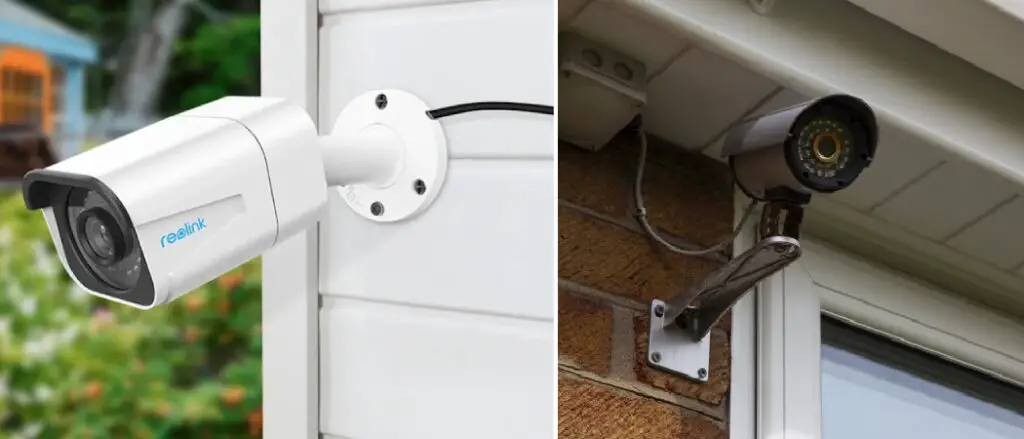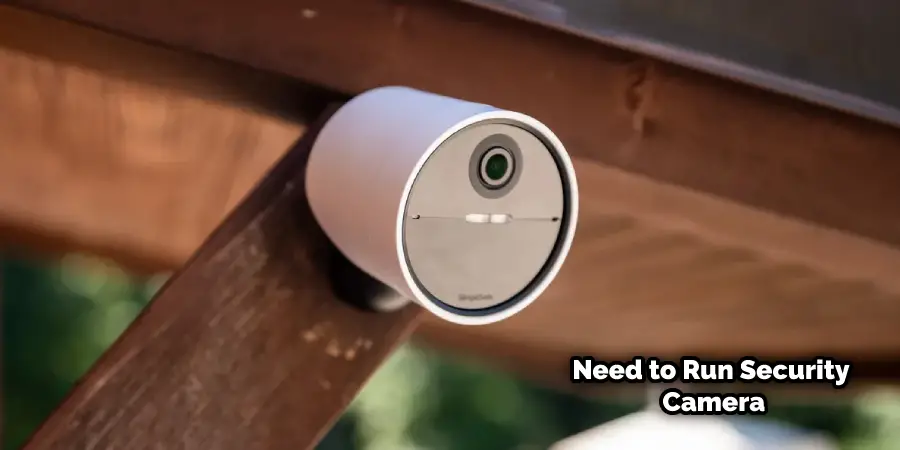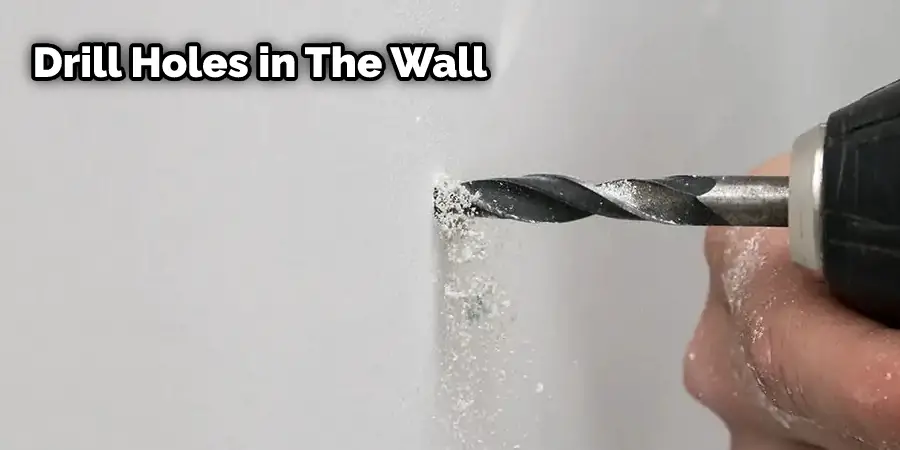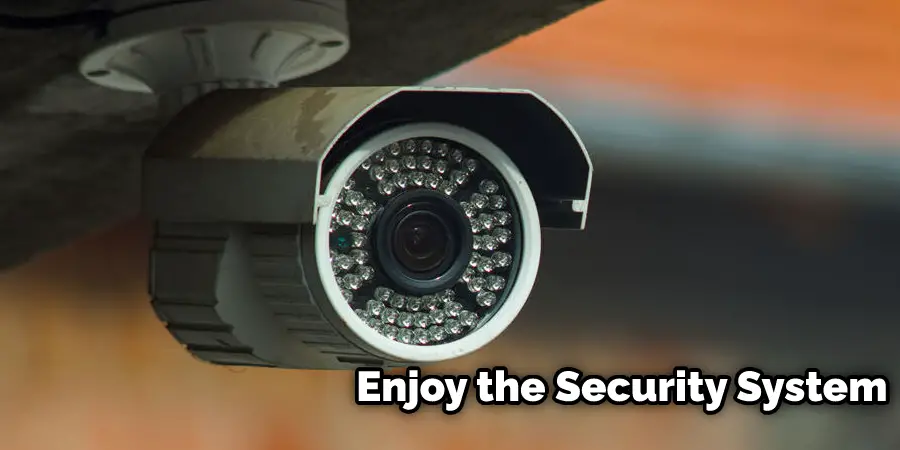Are you looking to upgrade your security system with an outdoor camera? Running security camera wires outside is an important step in the process, but if it’s not done correctly, it can leave your home vulnerable to a potential breach. Knowing the tips and tricks of running cables will help ensure that all connections are secure, giving you peace of mind while keeping everyone safe. In this blog post, we’ll show you exactly what you need to do when running security camera wires outside so that your property is better protected from any unwanted intruders. So, keep on reading to learn more about how to run security camera wires outside.

Why Do You Need to Run Security Camera Wires Outside
Running security camera wires outside is important for several reasons. Here are a few reasons why it’s necessary to run security camera wires outside:
- Better Coverage: Outdoor security cameras can provide better coverage of the surrounding area, especially if you have a large property or want to monitor outdoor spaces such as parking lots, yards, or patios.
- Improved Security: Outdoor cameras can deter burglars and other criminals from targeting your property, as they are more likely to be seen by passersby and neighbors. Additionally, outdoor cameras can provide evidence in the event of a break-in or other crime.
- Weather Resistance: Outdoor security cameras are designed to withstand the elements, including rain, wind, and extreme temperatures. By running security camera wires outside, you can ensure that your cameras are properly connected and protected from the weather.
- Flexibility: Running security camera wires outside provides greater flexibility in terms of camera placement and positioning. You can choose to mount cameras higher up, adjust the angle of the camera, and cover more ground with fewer cameras.
- Remote Monitoring: By installing outdoor security cameras and running the wires outside, you can monitor your property from anywhere in the world using a smartphone, tablet, or computer. This allows you to keep an eye on your property and receive alerts in real time, even when you’re not there.

Overall, running security camera wires outside is crucial for maximizing the effectiveness of your security system and ensuring the safety and security of your property.
10 Step-By-Step Guide on How to Run Security Camera Wires Outside
Step 1: Gather the Necessary Tools and Materials
Before running security camera wires outside, ensure you have all the necessary tools and materials. You will need to purchase outdoor-rated cabling and ensure that your cables are rated for the outdoor environment in which they will be used. Additionally, it would be best if you gathered any tools needed to cut and connect the cables, such as wire strippers, a drill, etc.
Step 2: Measure and Mark the Cable Lengths
Once you have all your materials ready to go, it’s time to measure and mark the cable lengths. Use measuring tape to determine how much cabling you need for each camera connection, and mark the lengths with a pen or marker so you can easily identify them later.
Step 3: Drill Holes in the Wall
Next, use a drill to create holes in the walls for running your security camera wires outside. Make sure that the holes are big enough for the cables to fit through and that they are positioned correctly so that water doesn’t enter the walls.

Step 4: Run Wires Through the Walls
Now, it’s time to run the wires through the holes you drilled in the walls. Be sure to feed each section of cabling through its respective hole and carefully thread them through until they reach their destination.
Step 5: Connect Cables to the Cameras
Once all your cabling has been fed through, it’s time to connect it to your security cameras. Refer to the instructions provided with your camera for details on how to properly connect and secure the wires.
Step 6: Secure Wires With Fasteners
To keep your security camera wires in place and prevent any damage, use zip ties or other fasteners to secure the wires along the walls and on the roof. This will help ensure that your cables don’t get damaged by wind or other elements.
Step 7: Protect Wires From Weather Elements
To protect your security camera wires from water and other weather elements, use a flexible conduit such as PVC or polyethylene. This will provide additional protection against water and other elements and help keep your cables safe.
Step 8: Test the System
Once all your wires are in place, it’s time to test the system by powering up the cameras and ensuring that they are working correctly. Make sure you can successfully view and record footage from all the cameras and that there are no issues.
Step 9: Cover Openings
After testing your system, you should cover any openings in walls or roofs to prevent water from entering the area. This will help keep your security camera wires safe and free from damage.
Step 10: Enjoy Your Security System
Congratulations, you are now ready to enjoy your security system! Monitor your property with peace of mind and stay one step ahead of any potential threats. Just remember to keep an eye on the batteries powering the cameras and replace them when necessary.

That’s it – you have successfully installed a secure outdoor security system! Now that you know how to run security camera wires outside, you can confidently protect your property from any potential intruders.
Troubleshooting Tips While Running Security Camera Wires Outside
1. Always Use Outdoor Rated Cables:
Make sure that your cabling is rated for the outdoor environment in which it will be used.
2. Drill Holes in the Right Place:
Pay attention to positioning when drilling holes, and make sure they are big enough to fit your cables through.
3. Secure Wires Along the Walls:
Use zip ties or other fasteners to secure cabling along the walls and on the roof to prevent any damage.
4. Cover Openings:
Make sure to cover all openings in walls or roofs so water doesn’t enter the area and damage your wires.
5. Monitor Batteries:
Keep an eye on the condition of your batteries and replace them when necessary for optimal performance.
By following these steps, you can ensure that your security system is properly installed and running smoothly.
How Do I Run Wires of Security Cameras without Exposing
Running security camera wires outside without exposing them is possible with the help of underground conduits. Underground conduits are typically made from PVC or polyethylene and provide additional protection against water and other elements. This allows you to run cable along the ground without worrying about it being visible or damaged by weather.
When using underground conduits, make sure to power the cameras with low-voltage DC power supplies. This will ensure that your system is safe and secure, even when running through underground conduit.
Running security camera wires outside without exposing them can be a difficult and time-consuming task, but it can provide additional protection against tampering and weather damage. By following the steps outlined above, you can properly install your system and have peace of mind knowing it is secure.
Also, the wire’s concealment helps you to protect your system from being tampered with by burglars or other criminals. This can give you extra security and peace of mind when monitoring your property.
Finally, make sure to use outdoor-rated cables when running wires outside, as these are more durable and able to withstand the elements. With proper installation and maintenance, your security system will run smoothly and effectively in no time.
Thank you for taking the time to read this guide on how to run security camera wires outside. We hope you understand the process better and are now more confident in installing your outdoor security system. Stay safe!
Tips for Installing Security Camera Wires Outside
1. Use Outdoor Rated Cables:
Ensure that all of the cables used are rated for outdoor use to prevent any damage from elements such as water or wind. Outdoor-rated cables are designed to withstand the environment and provide a reliable connection that won’t be easily disrupted.
2. Use Weatherproof Connectors:
When connecting the wires, it is important to use weatherproof connectors as these will help prevent moisture from entering into the connections and also make sure they stay securely connected. This will ensure the connections stay reliable for years to come.
3. Keep the Wires Above Ground:
Although it is sometimes tempting to bury cables below ground, this can cause additional problems if there are any issues in the future, such as needing to repair or replace them. It is best practice to keep security camera wires above ground for easy access and maintenance.
4. Use Cable Protectors:
Cable protectors are a great way to ensure that the cables remain protected from damage, such as from animals or lawnmowers, while also providing additional strain relief for the wires. This will ensure that your security cameras stay connected without any problems over time.
5. Label Your Wires:
Labeling the wires will save you time and frustration in the future should any repairs or replacements need to be done. This is especially important if there are multiple runs of cables from different cameras, as it will make it easier to identify and manage them all.
By following these tips, you can ensure that your security camera wires are properly installed and remain reliable for years to come.
Conclusion
Installing security camera wires outside can be tricky, but with the right tools and knowledge, it is doable. It’s important to consider weatherproofing materials, proper mounting techniques, and where to run your cables for maximum protection.
With patience and careful planning, anyone can install their outdoor surveillance system using these tips. If you’re still unsure how to execute this project safely, don’t hesitate to call in an expert with years of experience running wires outdoors.
Don’t let safety concerns stop you from adding extra peace of mind around your home or business – take on the challenge today! Thanks for reading this article about how to run security camera wires outside.
